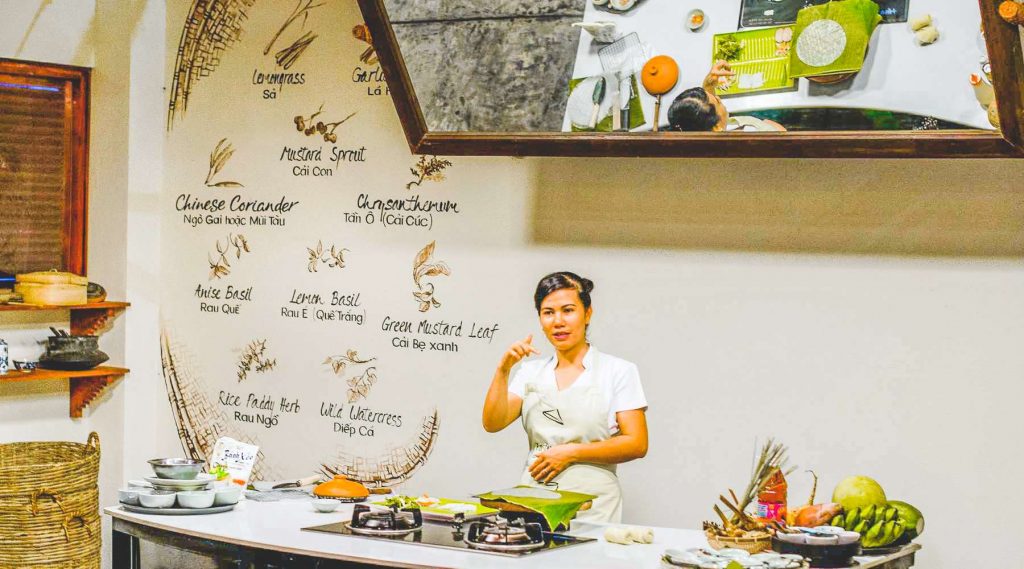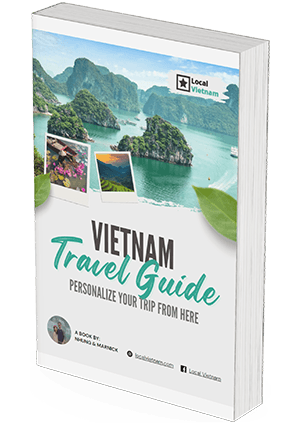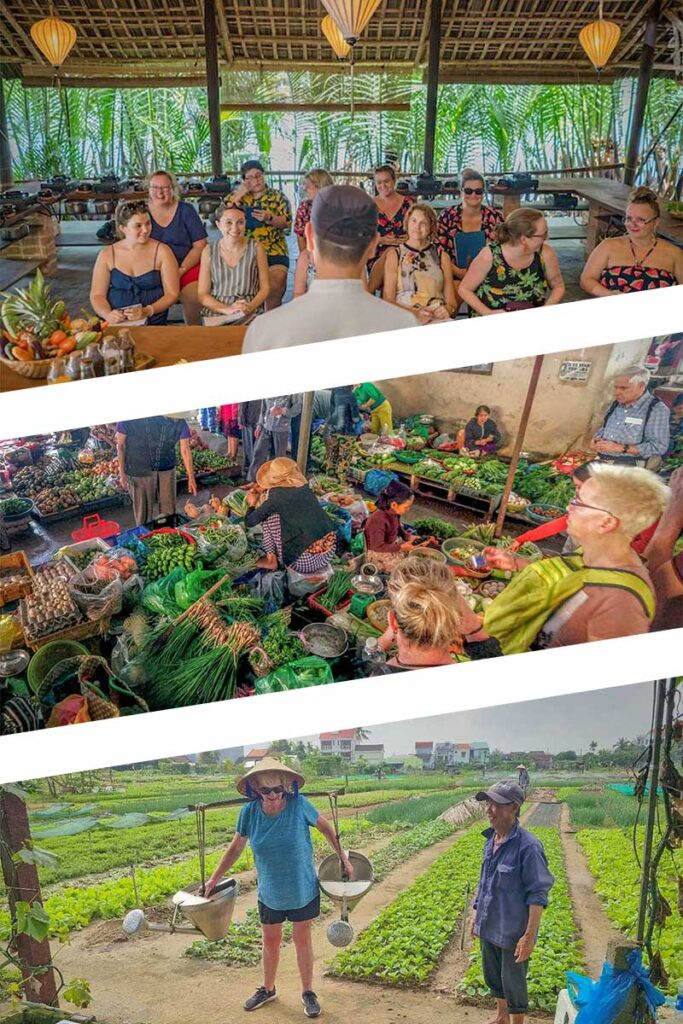Why take a cooking class in Hoi An?
Hoi An is the most popular place in Vietnam to take a cooking class — not just because of the food, but because the whole experience is more fun here.
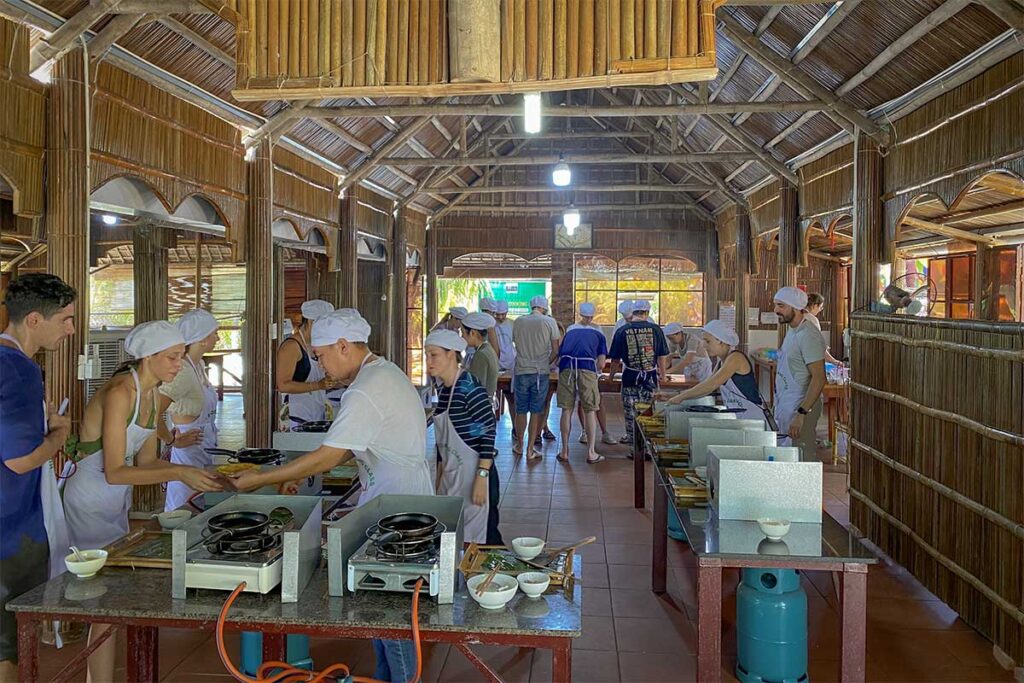
Most classes include extras like visiting the market, paddling a basket boat, biking through the countryside, or even trying buffalo riding. These added activities make it a lot more enjoyable — even if you’re not a big cooking fan — and it’s also great for families with kids.
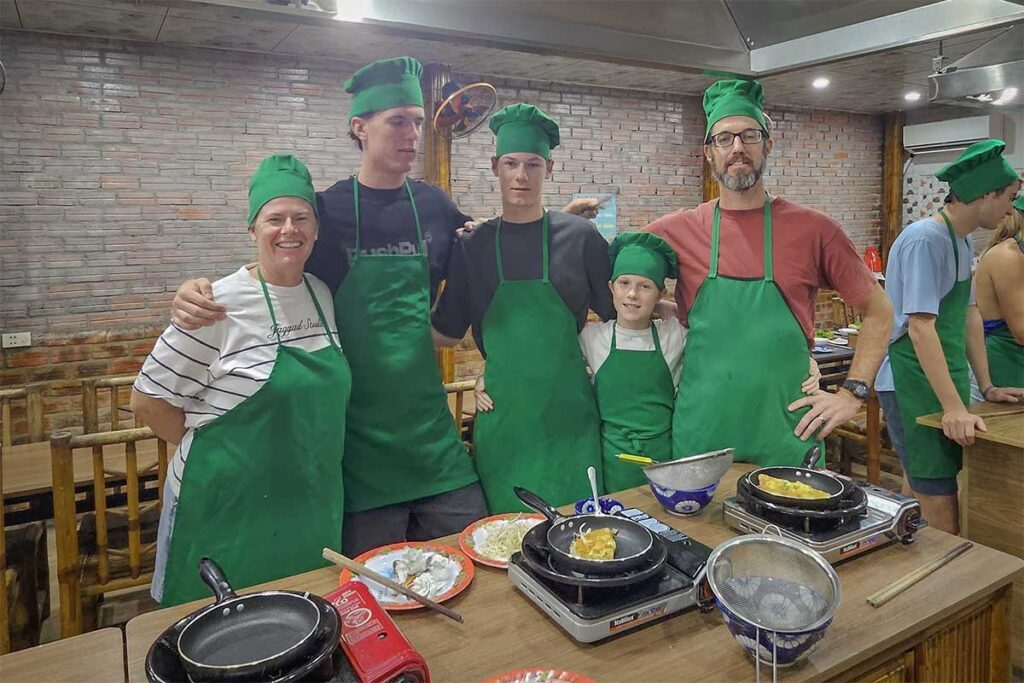
Another reason is that many travelers stay longer in Hoi An than in other destinations, making it ideal for slower, immersive activities like cooking.
Types & options of cooking classes in Hoi An
Hoi An offers a wide range of cooking classes to match your travel style, budget, and interest level. Whether you’re looking for a quick intro to Vietnamese food or a full-day countryside experience, here are the main types to consider:
Group vs. Private Classes
Group cooking classes are the most common. They’re fun, sociable, and more affordable — a good choice if you’re happy cooking alongside other travelers. Group sizes range from 4 to 15 people depending on the provider.

Private classes give you more flexibility. You can request specific dishes, move at your own pace, ask more questions, and get more personal attention. They’re ideal if you’re traveling with family, have dietary needs, or just want a quieter experience.
Level of Difficulty
Most Hoi An cooking classes are beginner-friendly. The recipes are broken down into easy steps, and the instructors speak good English. Even if you’ve never cooked Vietnamese food before, you’ll manage just fine.
Some private or upscale classes offer more advanced techniques. If you’re already confident in the kitchen or want to try more complex dishes, it’s worth checking what each class actually teaches.
Vegetarian and Vegan Options
Vegetarian or vegan? No problem. Many classes offer a veggie menu or can adapt dishes for you on request — just mention it when booking.
There are also a few cooking schools that focus entirely on plant-based Vietnamese food, often using fresh herbs and vegetables from local gardens.
Location & Setting
Classes take place in all sorts of places. Some are in the Old Town or near the market, others are in the countryside, by the river, or in someone’s home.
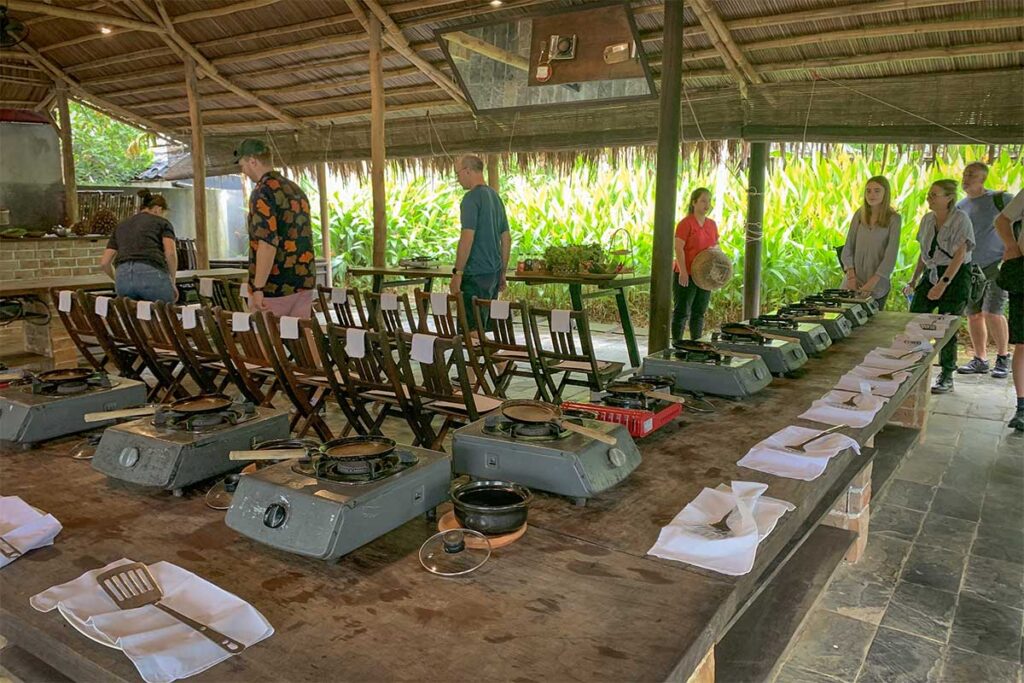
If you want convenience, go for a class in town. If you’d like to see more of the local life and scenery, pick one that includes a countryside location or an eco-farm.
Duration
You can choose from quick 1–2 hour sessions (usually just cooking) or longer tours that last half a day or more.
The longer ones often include extras like market visits, boat rides, or cycling — good if you want more than just cooking. If your time in Hoi An is limited, the shorter classes are still fun and filling.
Activities around Hoi An cooking classes
In Hoi An, many cooking classes include more than just time in the kitchen. These extras help you understand where Vietnamese food comes from — the markets, the countryside, and the people behind it. Before you book, check the itinerary to avoid doubling up on things you’ve already done or to pick a class that combines two highlights in one go.
1. Market visit
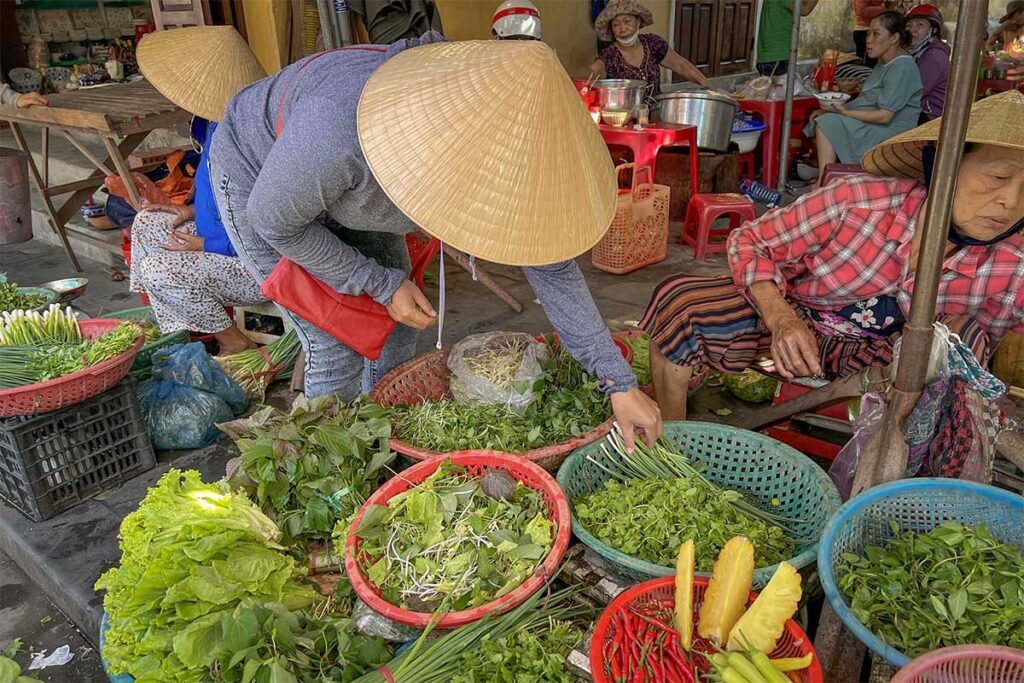
Almost every cooking class starts at a local market — and for good reason. You’ll walk through stalls full of herbs, vegetables, noodles, and seafood, often buying ingredients for the dishes you’ll cook later. It’s a fun way to learn what goes into Vietnamese food and how locals shop, bargain, and choose the freshest items.
2. Eco cooking tours (Tra Que Vegetable Village)
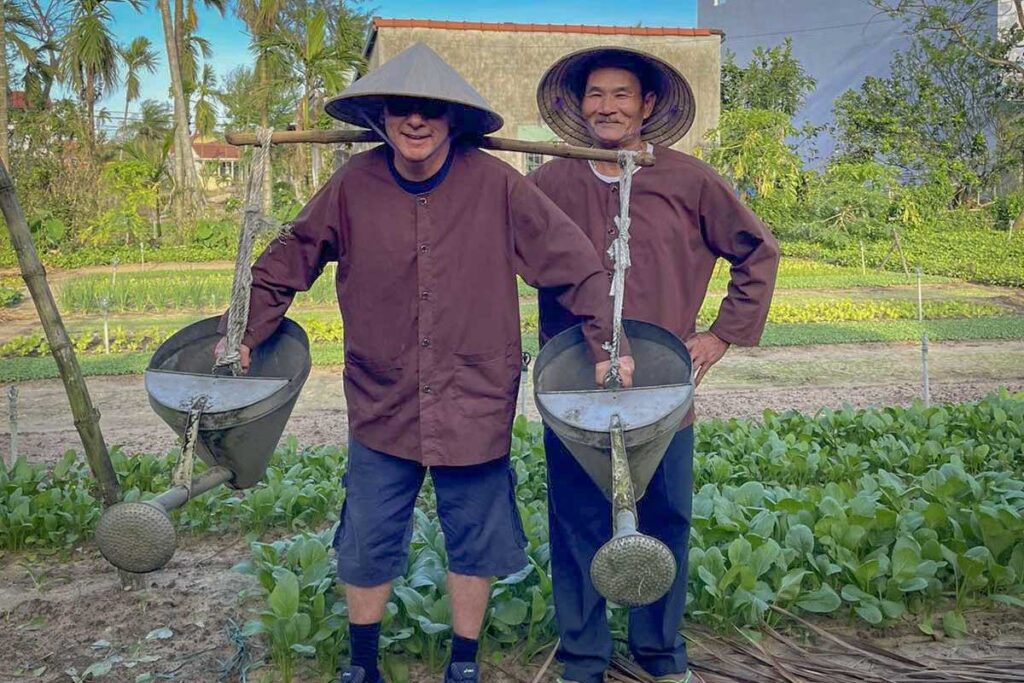
Eco tours often take you to Tra Que, a small village known for its organic herbs and traditional gardening. You’ll learn how farmers grow mint, basil, morning glory, and other key ingredients using centuries-old techniques — and sometimes get to water the crops yourself. It’s a great way to see where the flavors in your cooking actually start.
3. Basket boat ride & fishing
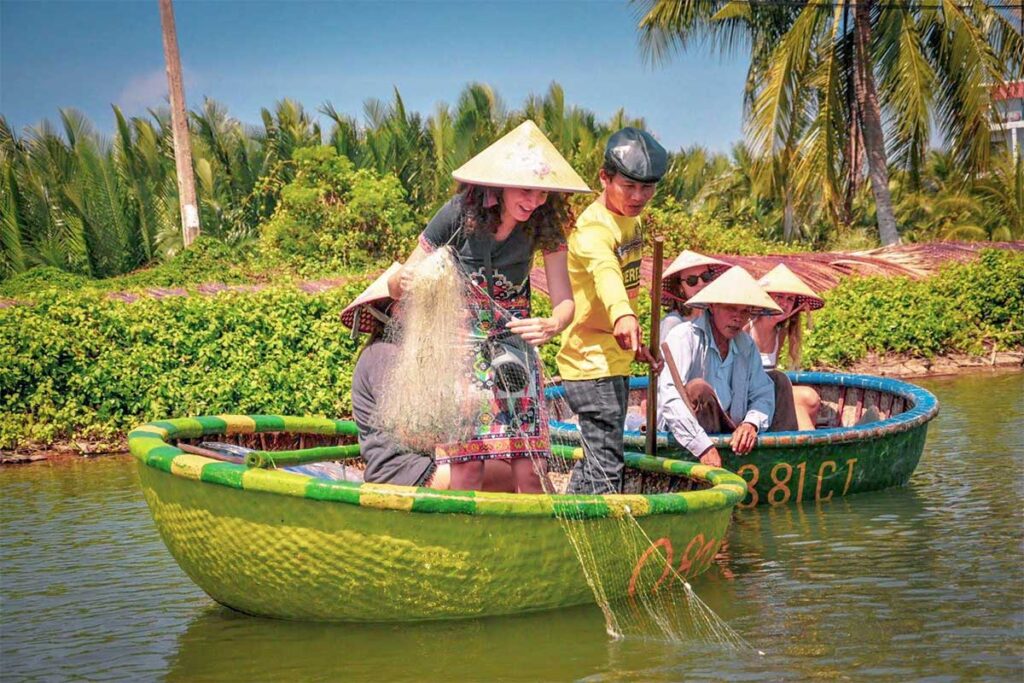
In Cam Thanh coconut village, some cooking classes include a short basket boat ride. It’s fun and photogenic — but also shows how locals used to fish and gather ingredients from the river and coconut forest. You might even try throwing a traditional fishing net or catching small crabs. While the catch isn’t always cooked, it adds to the full farm-to-table experience.
4. Countryside cycling

Some classes start or end with a short bicycle ride through Hoi An’s quiet backroads. You’ll pass rice paddies, farms, and water buffalo — giving you a better feel for how everyday ingredients like rice and vegetables are produced. It’s a peaceful and authentic way to connect the cooking class with local life and farming.
5. Buffalo riding
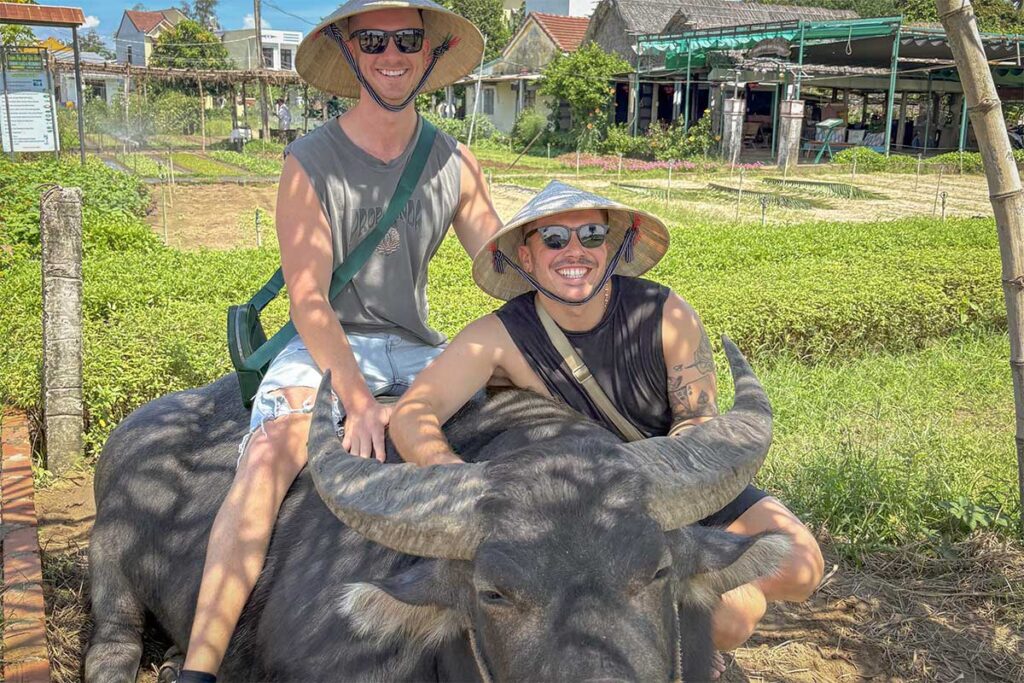
Occasionally included in rural-focused tours, riding a buffalo might feel like a quirky extra — but it also connects you with how traditional farming was done in Vietnam, long before machines. Many classes that include this are based in farming villages, where you also learn about the produce used in daily meals.
What to expect during a cooking class in Hoi An
Most Hoi An cooking classes follow a similar structure, whether you choose a quick 2-hour session or a full-day experience. Here’s how a typical class unfolds from start to finish.
Step 1: Market visit & Other activities
Most classes begin with a guided visit to a local market. Here, you’ll learn to recognize common ingredients like lemongrass, fish sauce, and fresh herbs — and maybe try a few local snacks. If the cooking venue is outside the Old Town (like in a countryside kitchen or herb village), you might bike or ride through the area after the market, sometimes with stops for basket boat rides, farming, or other short activities.
Step 2: Arrival & menu introduction
Once at the cooking location, you’re welcomed with a drink or small snack. The instructor will go over the menu, explaining the dishes you’ll prepare and how they relate to Vietnamese food culture. Menus usually include 3–5 dishes, often with a starter, a main, and something crispy or sweet.
Step 3: Hands-On Cooking Experience
This is the core part of the class. You’ll chop, stir, roll, and fry your way through each dish under the guidance of a local chef. Most classes are very hands-on and suitable for beginners — the chef demonstrates each step, then you repeat it at your own station. You’ll also learn small tips: how to wrap spring rolls properly, how to adjust dipping sauce, or how to balance sweet–sour–salty flavors.
Step 4: Time to eat
After cooking, you sit down to eat your creations — often together with the group in a shared meal setting. It’s relaxed, and a great moment to chat with other travelers or ask the chef more about the recipes and techniques.
Step 5: End of class – Recipes or souvenir
At the end, some places give you a printed recipe booklet or certificate of completion. This isn’t guaranteed everywhere, but it’s a nice touch if you want to recreate the dishes back home.
Popular dishes cooked in Hoi An cooking classes
Hoi An cooking classes usually focus on iconic Vietnamese dishes — some national favorites, others more local to Central Vietnam. Most menus include a mix of starters, mains, and dipping sauces. Here are some of the most common dishes you might learn to make:
- Fresh Spring Rolls (Gỏi cuốn) – Rice paper rolls filled with herbs, noodles, and pork or shrimp, served with peanut or hoisin sauce.
- Banh Xeo – Crispy Vietnamese rice pancakes with pork, shrimp, and bean sprouts, wrapped in greens and dipped in sauce.
- Pho or Cao Lau – Depending on the region focus, you’ll cook Hanoi-style Pho or Hoi An’s signature noodles with pork and herbs.
- Bun Bo Nam Bo – Warm rice noodle salad with grilled beef or pork, herbs, peanuts, and sweet fish sauce.
- Eggplant in Claypot – A flavorful vegetarian-friendly dish often cooked with garlic, chili, and soy-based sauce.
- Fish in Banana Leaf – Fresh fish marinated in lemongrass and spices, wrapped and grilled in banana leaf for rich flavor.
- Peanut Sauce & Nuoc Cham – The essentials: sweet chili fish sauce and creamy peanut dip to go with rolls or pancakes.
Best cooking classes in Hoi An
1. Red Bridge Cooking School

One of Hoi An’s most established and scenic cooking classes, located by the Thu Bon River just outside the town center.
You start with a guided market visit in Hoi An’s Old Town, then take a short boat ride to the cooking school.
The main class includes hands-on instruction for dishes like Pho and clay pot fish, and longer versions also visit a nearby organic herb garden.
With a strong focus on fresh, local ingredients and a peaceful riverside setting, it’s a well-organized experience for those who want both learning and scenery. An evening version is also available at the Hai Café in town for those short on time.
Hoi An Cooking Class – Learn Cooking from a Local Chef
- Experience: Visit Hoi An Market, cruise by boat, and cook authentic Vietnamese dishes with a local chef.
- Includes: Market tour, river cruise, hands-on cooking class and lunch
2. Hoi An Eco Cooking Tour
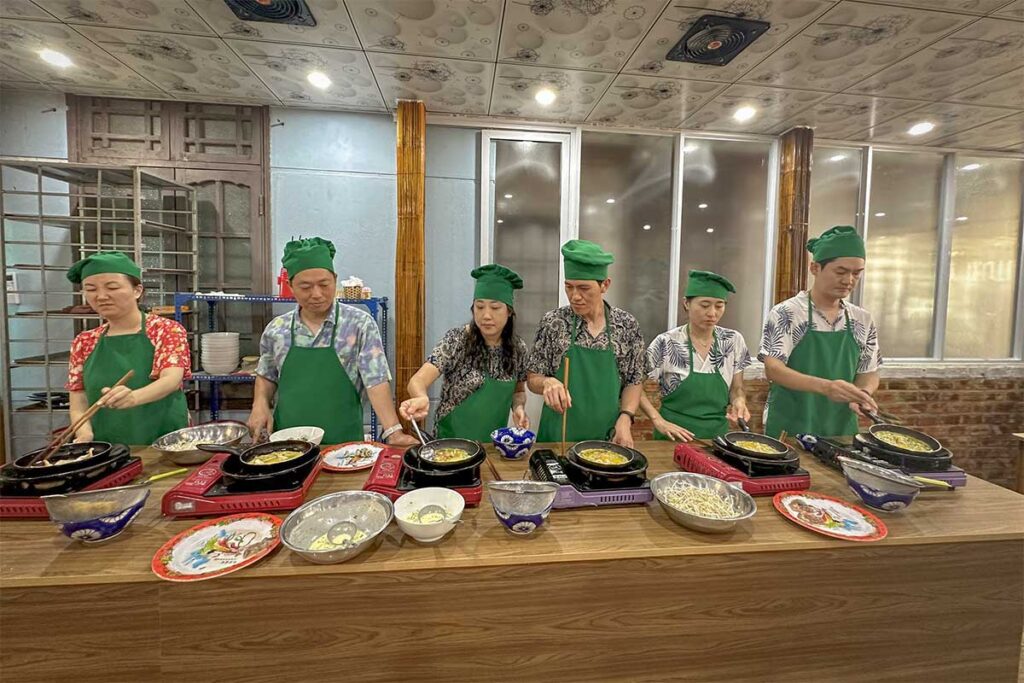
This tour combines a hands-on cooking class with an immersive look at local life. It starts with a guided visit to a busy market to learn how to pick the best ingredients. You’ll then travel to Cam Thanh village for a short basket boat ride through the coconut forest, with the chance to try net fishing and observe daily life on the water.
The cooking class takes place in an open-air riverside kitchen, where you’ll prepare dishes like Pho and Banh Xeo.
Everything is very hands-on, and dietary preferences like vegetarian are usually well accommodated.
3. Coconut Fragrance Cooking Class
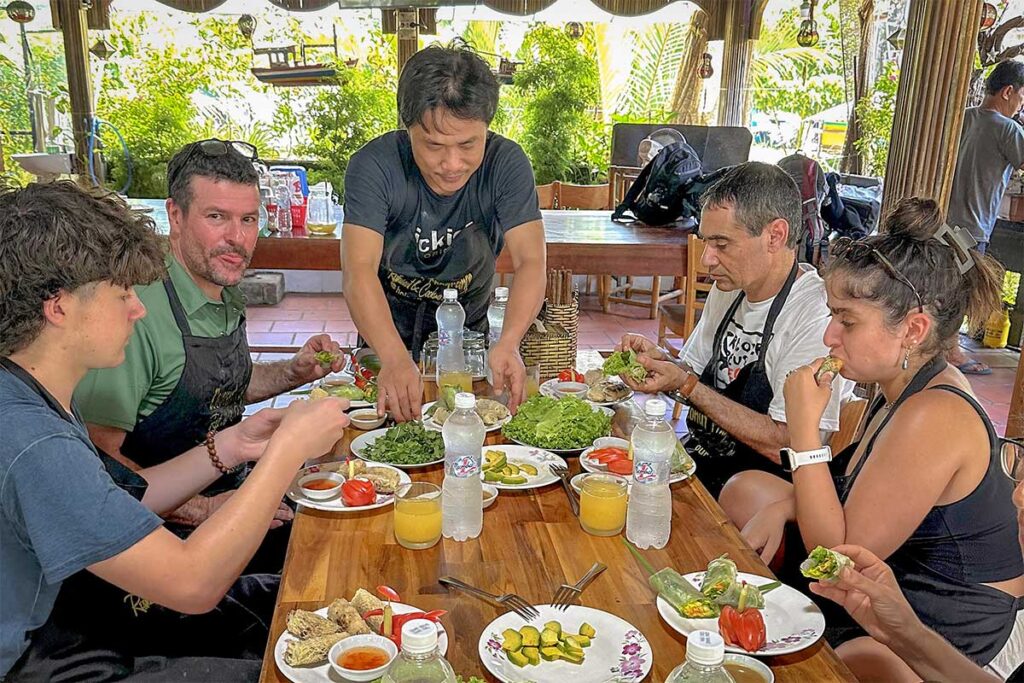
This family-run cooking class offers an authentic experience that begins with a visit to a local market to choose fresh ingredients and learn about Vietnamese produce. Afterward, you’ll enjoy a traditional basket boat ride through the peaceful coconut forest and can even try your hand at crab fishing.
The cooking itself takes place in an open-air kitchen by the river, where you’ll learn to make Vietnamese staples like spring rolls, Banh Xeo, and Pho. The relaxed, friendly atmosphere and setting make this class a great mix of cooking and local culture.
4. Hoi An Tropical Cooking Tour
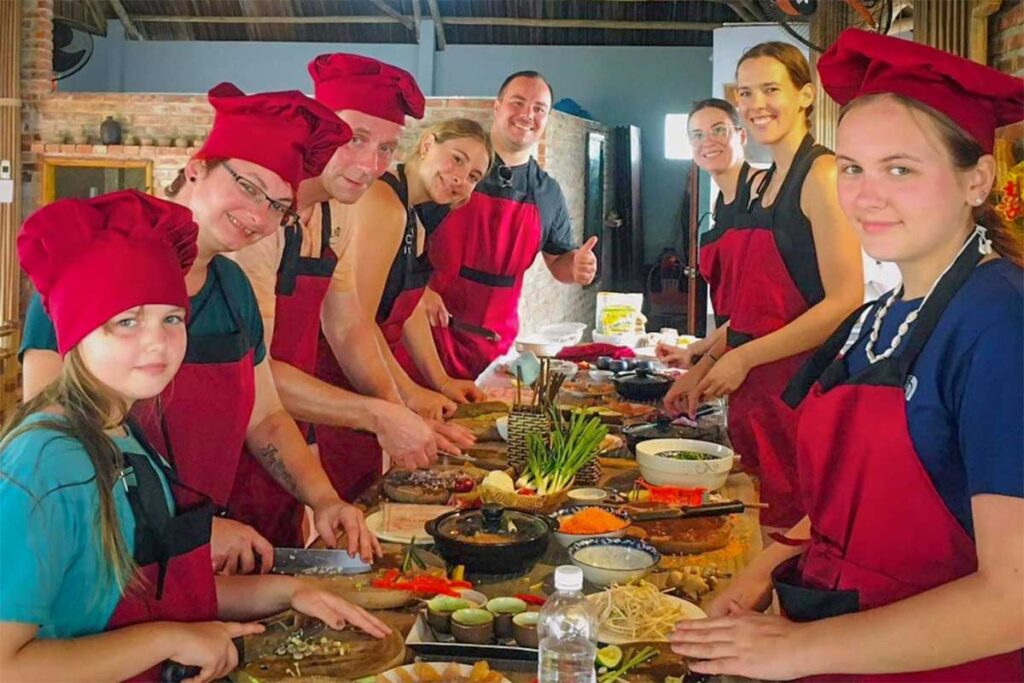
This class takes you deep into the countryside for a relaxed cooking experience guided by a local chef.
The day begins with a market tour to learn about traditional ingredients and how to choose quality produce.
Afterward, you’ll take a peaceful basket boat ride through calm waterways and have the option to try local fishing techniques.
The cooking takes place in a quiet outdoor kitchen, with instruction on classic Vietnamese recipes in a casual, welcoming setting. It’s a fun and interactive way to explore the flavors and rhythm of rural Vietnam.
5. Gioan Cookery School
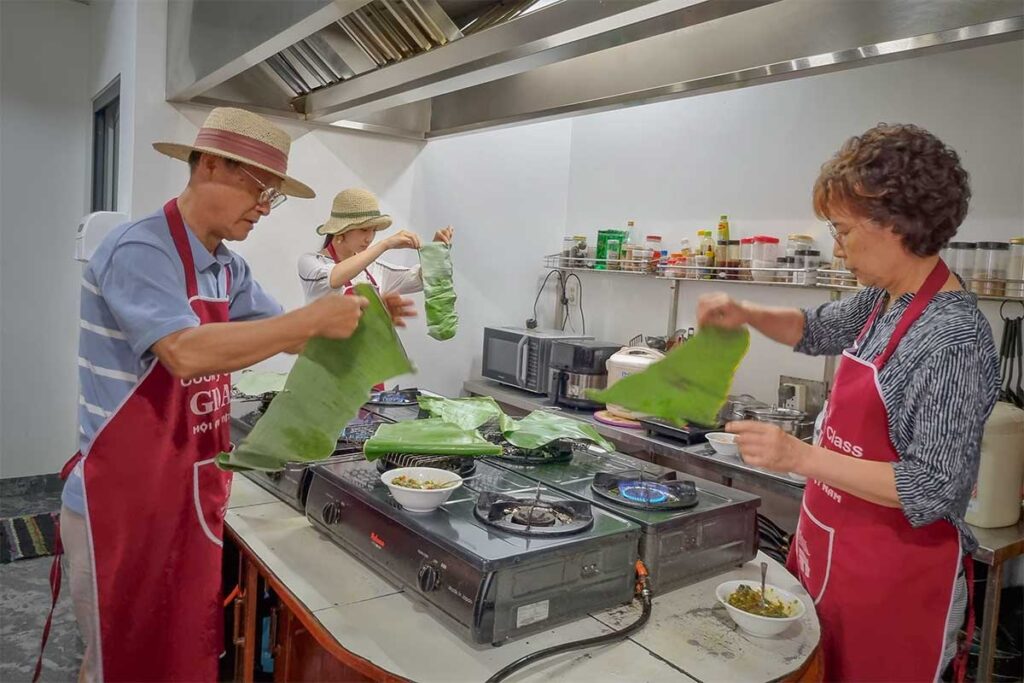
Focused on home-style Vietnamese cooking, this class starts with a trip to a local market where your host introduces you to fresh herbs, spices, and local specialties. The course emphasizes flavor balance – sweet, sour, salty, and spicy – and how to use fresh herbs and sauces to get it right.
Group sizes are small, and the style is very hands-on, so you’ll get plenty of individual support as you cook dishes like Pho, spring rolls, and Banh Xeo. It’s a welcoming and flexible environment, ideal if you’re looking to learn at your own pace and go home with practical skills and recipes.
Is a cooking class in Hoi An worth it?
Absolutely — if you enjoy food, hands-on experiences, and learning more about Vietnamese culture, a cooking class in Hoi An is a great choice. It’s a fun break from temples and sightseeing, and you’ll leave with actual skills (and recipes) to recreate the dishes back home.
That said, not everyone is excited about picking vegetables or taking a boat to get to the kitchen. Some people love the full eco-tour experience; others just want to cook. So it really depends on what kind of activity you’re looking for.
To avoid disappointment, check the full itinerary and group size before booking. Whether you’re in it for the food, the setting, or the extras like market visits and basket boats — there’s likely a class that fits your style.
